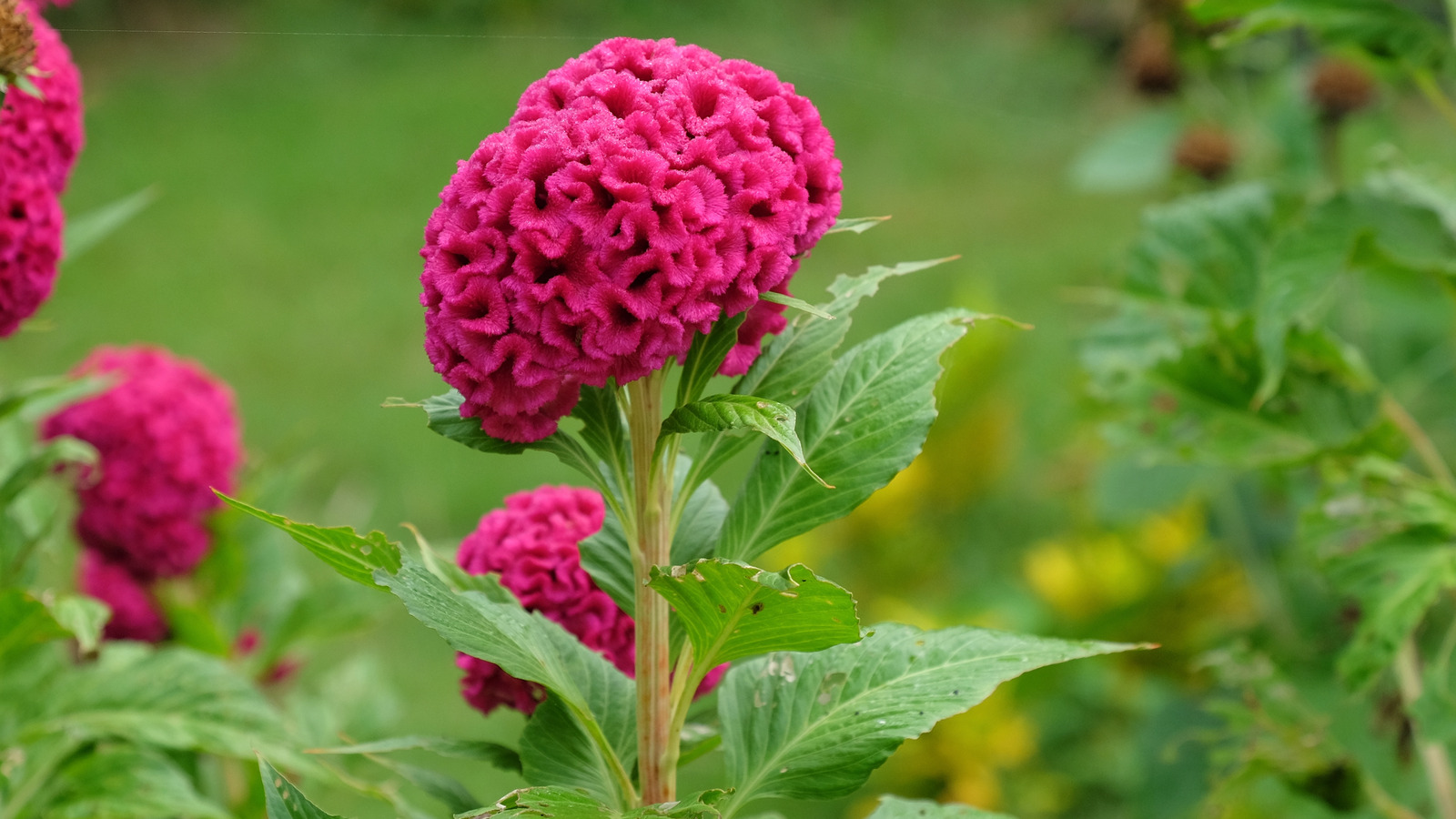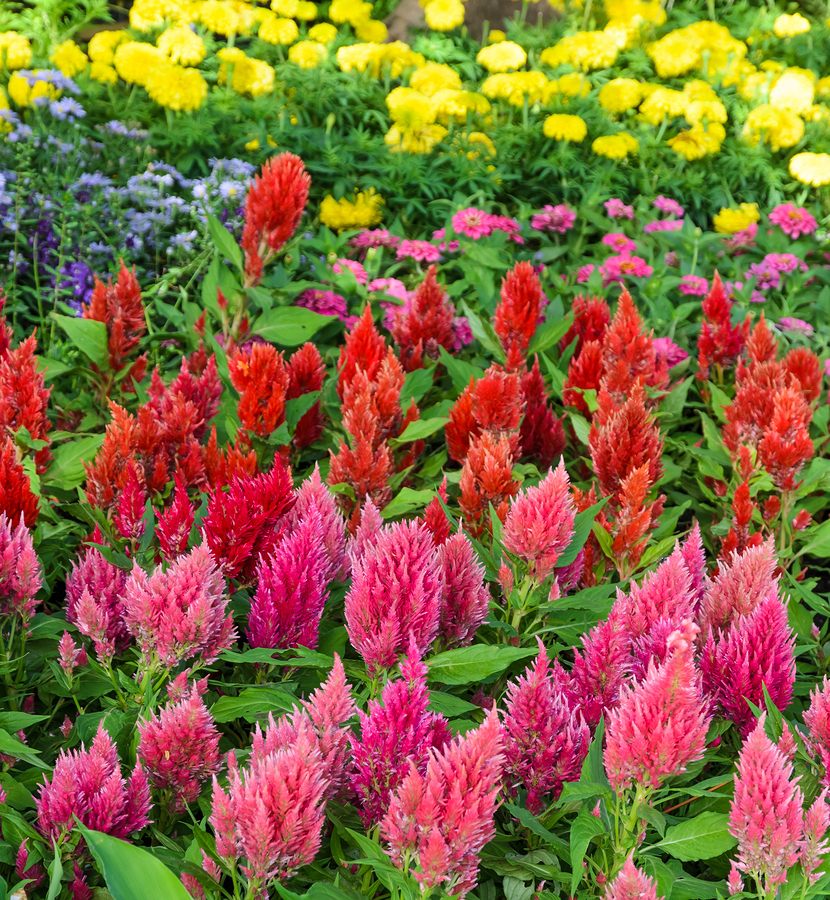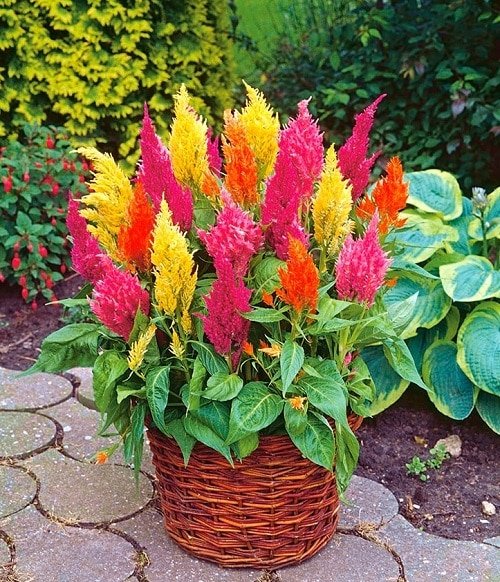Understanding Celosia Plant Basics
Celosia plants are a popular choice among gardeners and flower enthusiasts due to their vibrant, feathery blooms and low-maintenance requirements. Native to Africa and Asia, these plants have been cultivated for centuries for their unique characteristics and beauty. To properly care for a celosia plant, it’s essential to understand its basic needs and types. There are three main types of celosia plants: Celosia argentea, Celosia cristata, and Celosia plumosa. Each type has its distinct features, such as leaf shape, flower color, and growth habits.
Celosia argentea, also known as silver cock’s comb, is a popular variety known for its striking, silver-gray foliage and vibrant red, pink, or purple flowers. Celosia cristata, or crested cock’s comb, features unique, brain-like flowers in shades of red, yellow, and orange. Celosia plumosa, or plumed cock’s comb, boasts feathery, plume-like flowers in a range of colors, including pink, red, and white.
When learning how to care for a celosia plant, it’s crucial to understand the specific needs of your plant’s type. While they share some similarities, each type of celosia plant has its unique requirements. By understanding these differences, you can provide your plant with the best possible care and enjoy its beautiful blooms for months to come.
In the next section, we’ll explore the ideal environment for your celosia plant, including temperature, humidity, and light conditions. By providing your plant with the right environment, you’ll be well on your way to growing a thriving, vibrant celosia plant.
Choosing the Right Environment for Your Celosia Plant
When it comes to how to care for a celosia plant, selecting the right environment is crucial for optimal growth and blooming. Celosia plants prefer warm temperatures, typically between 65°F to 95°F (18°C to 35°C), and high humidity levels, ranging from 50% to 70%. To replicate these conditions, choose a location that receives bright, indirect light, such as an east- or west-facing window or a shaded outdoor area.
For indoor spaces, consider using a humidifier to maintain the ideal humidity level, especially during dry winter months. You can also group plants together to create a microclimate that promotes healthy growth. Avoid placing your celosia plant near heating or cooling vents, fireplaces, or drafty windows, as this can cause temperature fluctuations and stress the plant.
When selecting a location for your celosia plant outdoors, choose a spot that receives partial shade to full sun, depending on the variety. Celosia argentea and Celosia cristata prefer partial shade, while Celosia plumosa can tolerate full sun. Make sure the area is well-ventilated to prevent fungal diseases and promote healthy growth.
In addition to temperature and humidity, consider the soil quality and drainage when choosing a location for your celosia plant. Celosia plants prefer well-draining soil that is rich in organic matter. Avoid planting in areas with standing water or where water tends to collect, as this can lead to root rot and other problems.
By providing your celosia plant with the right environment, you’ll be well on your way to growing a thriving, vibrant plant. In the next section, we’ll explore the importance of proper watering and fertilization for celosia plants.
Watering and Fertilizing Your Celosia Plant
Proper watering and fertilization are crucial for the health and growth of your celosia plant. When learning how to care for a celosia plant, it’s essential to understand the specific watering and fertilization needs of your plant. Celosia plants prefer moist soil, but make sure not to overwater, as this can lead to root rot and other problems.
Water your celosia plant when the top inch of soil feels dry to the touch. Avoid getting water on the leaves or crown of the plant, as this can cause fungal diseases. Instead, water at the base of the plant, allowing the soil to absorb the moisture. Reduce watering during the winter months when the plant is dormant.
Fertilization is also essential for celosia plant growth. Use a balanced, water-soluble fertilizer (20-20-20) during the growing season (spring and summer). Dilute the fertilizer to half the recommended strength to avoid burning the roots. You can also use a high-phosphorus fertilizer (10-20-10) to promote blooming.
Organic fertilizers, such as compost or manure tea, can also be used to promote healthy growth. Avoid using high-nitrogen fertilizers, as these can promote leaf growth at the expense of blooms. By providing your celosia plant with the right amount of water and fertilizer, you’ll be rewarded with vibrant blooms and healthy growth.
It’s also important to note that celosia plants have different fertilization needs at different stages of growth. During the seedling stage, use a starter fertilizer (5-10-5) to promote root development. Once the plant is established, switch to a balanced fertilizer to promote overall growth.
By following these watering and fertilization tips, you’ll be well on your way to growing a thriving celosia plant. In the next section, we’ll explore the benefits of pruning and grooming for celosia plants.
Pruning and Grooming for Maximum Blooms
Pruning and grooming are essential techniques for promoting healthy growth and maximizing blooms in celosia plants. By learning how to care for a celosia plant, you’ll understand the importance of regular pruning and grooming to encourage bushy growth, prevent legginess, and promote blooming.
Start by removing any dead or damaged leaves or stems, as these can attract pests and diseases. Use clean, sharp pruning tools to prevent spreading diseases. Cut back leggy stems to encourage branching and promote a fuller plant shape.
For celosia plants that produce large, showy blooms, remove any weak or spindly stems to direct the plant’s energy towards producing larger, more vibrant blooms. Pinch off the tips of stems to encourage branching and promote more blooms.
Regular grooming is also essential for maintaining the health and appearance of your celosia plant. Remove any debris or dead flowers to prevent the spread of diseases and encourage the plant to produce more blooms. Use a soft-bristled brush or a gentle stream of water to remove any dust or debris from the leaves.
By pruning and grooming your celosia plant regularly, you’ll be rewarded with a fuller, more vibrant plant that produces an abundance of blooms. Remember to prune and groom your plant at the right time, as pruning at the wrong time can stress the plant and reduce blooming.
For example, prune your celosia plant in the spring, when new growth begins, to encourage bushy growth and promote blooming. Avoid pruning in the fall, as this can cause the plant to go dormant and reduce blooming.
By following these pruning and grooming tips, you’ll be well on your way to growing a thriving, vibrant celosia plant. In the next section, we’ll explore common pests and diseases that can affect celosia plants and provide advice on how to prevent and treat these issues.
Pest and Disease Management for Celosia Plants
Celosia plants are susceptible to various pests and diseases that can affect their growth and blooming. When learning how to care for a celosia plant, it’s essential to understand the common pests and diseases that can affect these plants and how to prevent and treat them.
Aphids, whiteflies, and spider mites are common pests that can infest celosia plants. These pests can cause damage to the leaves and stems, leading to stunted growth and reduced blooming. To prevent infestations, use neem oil or insecticidal soap to repel pests. For severe infestations, use chemical pesticides as a last resort.
Powdery mildew, leaf spot, and root rot are common diseases that can affect celosia plants. These diseases can cause damage to the leaves, stems, and roots, leading to stunted growth and reduced blooming. To prevent diseases, ensure good air circulation, water plants at the base, and avoid overhead watering. For severe infections, use fungicides or bactericides as needed.
Regular monitoring is key to preventing pest and disease infestations. Inspect your celosia plants regularly for signs of pests or diseases, and take action promptly to prevent the problem from spreading.
Organic control methods, such as introducing beneficial insects or using physical barriers, can also be effective in managing pests and diseases. For example, introducing ladybugs or lacewings can help control aphid populations, while using fine-mesh screens can prevent whiteflies from reaching your plants.
By understanding the common pests and diseases that can affect celosia plants and taking steps to prevent and treat them, you can help ensure the health and well-being of your plants. In the next section, we’ll explore the different methods for propagating celosia plants for continued growth.
Propagating Celosia Plants for Continued Growth
Propagating celosia plants is a great way to share these beautiful flowers with friends and family, or to create new plants for your own garden. When learning how to care for a celosia plant, it’s essential to understand the different methods for propagating these plants, including seed starting, stem cuttings, and division.
Seed starting is a popular method for propagating celosia plants. Sow seeds indoors 6-8 weeks before the last frost date in your area. Use a well-draining seed starting mix and keep the soil warm (around 70-80°F) until germination. Transplant seedlings outdoors when they have 2-3 sets of leaves.
Stem cuttings are another effective method for propagating celosia plants. Take 4-6 inch stem cuttings from the tips of healthy stems. Remove lower leaves and dip the cut end in rooting hormone. Plant the cutting in a well-draining potting mix and keep the soil moist until roots develop.
Division is a simple method for propagating celosia plants. Dig up the entire plant and gently separate the roots. Replant the separated sections in well-draining soil and keep the soil moist until established.
To increase your chances of successful propagation, make sure to use healthy parent plants, provide optimal growing conditions, and avoid over-watering. With a little practice and patience, you can successfully propagate celosia plants and enjoy their beauty for years to come.
Some additional tips to keep in mind when propagating celosia plants include using a rooting hormone to increase the chances of successful rooting, and providing high humidity to promote root growth. By following these tips and using the right propagation method, you can successfully propagate celosia plants and enjoy their beauty for years to come.
In the next section, we’ll address common problems and solutions for celosia plant care, including leaf drop, slow growth, and lack of blooms.
Common Problems and Solutions for Celosia Plant Care
Despite their relatively low-maintenance requirements, celosia plants can still experience some common problems that can affect their growth and blooming. When learning how to care for a celosia plant, it’s essential to understand these potential issues and know how to troubleshoot them.
Leaf drop is a common problem that can occur when celosia plants are exposed to extreme temperatures, dry air, or over-watering. To prevent leaf drop, ensure that your plant is receiving the right amount of water and humidity, and avoid placing it near heating or cooling vents.
Slow growth is another issue that can affect celosia plants. This can be caused by a lack of nutrients, inadequate light, or poor soil quality. To promote healthy growth, fertilize your plant regularly, provide it with bright, indirect light, and use a well-draining potting mix.
Lack of blooms is a common problem that can occur when celosia plants are not receiving enough light or nutrients. To encourage blooming, provide your plant with at least 4-6 hours of direct sunlight per day, and fertilize it regularly with a balanced fertilizer.
Other common problems that can affect celosia plants include pests, diseases, and root bound conditions. To prevent these issues, inspect your plant regularly for signs of pests or diseases, and repot it every 1-2 years to provide fresh soil and a larger pot.
By understanding these common problems and knowing how to troubleshoot them, you can help ensure the health and well-being of your celosia plant. In the next section, we’ll summarize the key takeaways from this article and provide final tips and recommendations for continued care and maintenance.
Conclusion: Enjoying the Beauty of Your Celosia Plant
With the right care and attention, celosia plants can thrive and provide vibrant, long-lasting blooms that add a pop of color to any space. By following the guidelines outlined in this article, you’ll be well on your way to becoming a celosia expert and enjoying the many benefits of these beautiful plants. Remember to provide your celosia plant with the right environment, watering, and fertilization, and don’t hesitate to prune and groom it regularly to encourage maximum blooms. With a little practice and patience, you’ll be able to enjoy the stunning beauty of your celosia plant for months to come.
As you continue to care for your celosia plant, keep in mind that it’s a relatively low-maintenance plant that can thrive in a variety of conditions. With proper care, celosia plants can grow quite large and produce an abundance of blooms, making them a great choice for gardeners of all skill levels. Whether you’re a seasoned pro or just starting out, learning how to care for a celosia plant can be a fun and rewarding experience.
One of the best things about celosia plants is their ability to add a touch of elegance and sophistication to any space. Whether you’re looking to brighten up a room or add some color to your outdoor garden, celosia plants are a great choice. With their vibrant blooms and delicate foliage, they’re sure to make a statement and draw attention from anyone who sees them.
In addition to their beauty, celosia plants also have a number of practical uses. They can be used as a natural dye plant, and their leaves and stems can be used in floral arrangements and other craft projects. They’re also a great choice for gardeners who want to attract pollinators and other beneficial insects to their garden.
Overall, celosia plants are a great choice for anyone who wants to add some beauty and elegance to their space. With their vibrant blooms and delicate foliage, they’re sure to make a statement and draw attention from anyone who sees them. By following the guidelines outlined in this article, you’ll be able to enjoy the many benefits of these beautiful plants and keep them thriving for months to come.




:max_bytes(150000):strip_icc()/cockscomb-celosia-getty-0623-e7d28432a4f246fa9ce879819bf03568.jpg)




